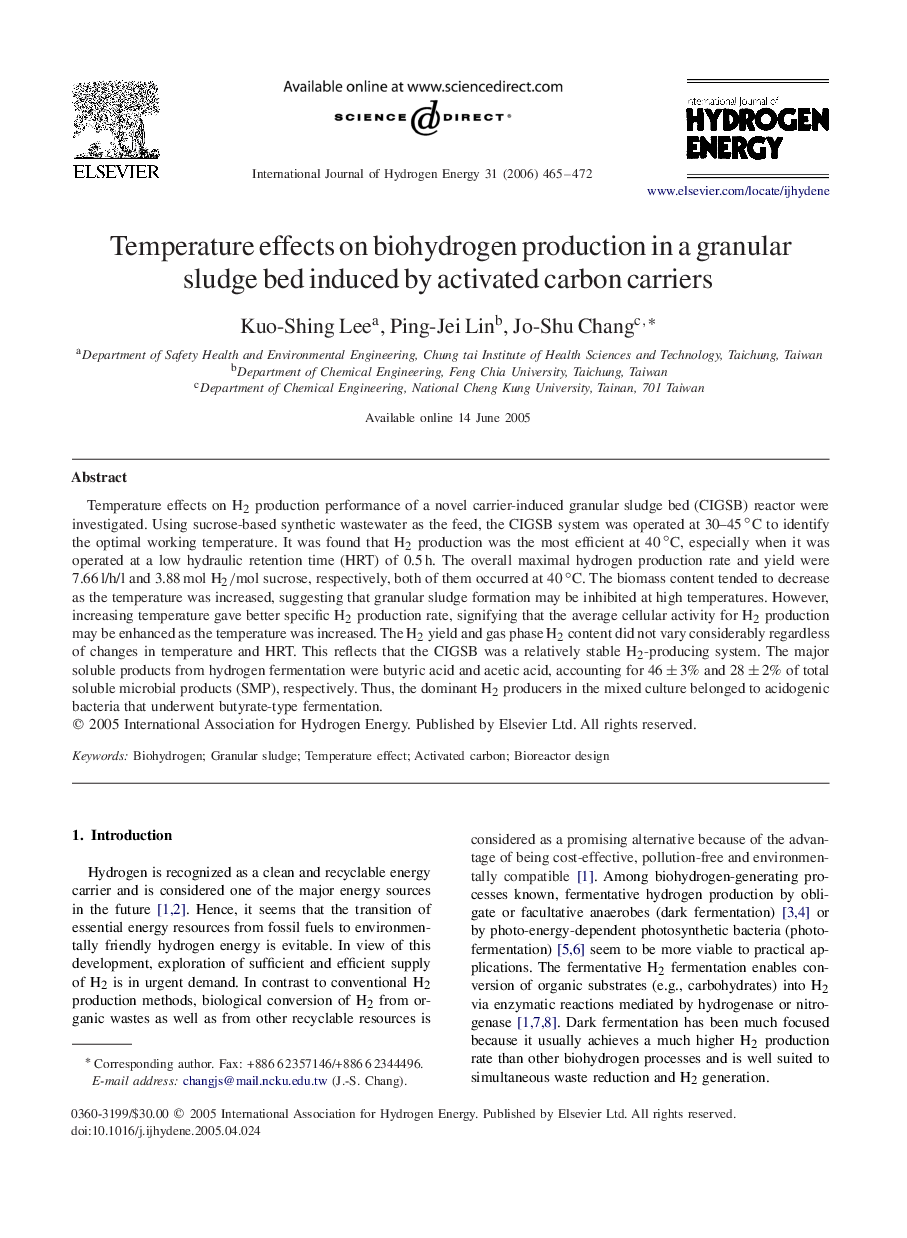| Article ID | Journal | Published Year | Pages | File Type |
|---|---|---|---|---|
| 1280809 | International Journal of Hydrogen Energy | 2006 | 8 Pages |
Temperature effects on H2H2 production performance of a novel carrier-induced granular sludge bed (CIGSB) reactor were investigated. Using sucrose-based synthetic wastewater as the feed, the CIGSB system was operated at 30–45∘C to identify the optimal working temperature. It was found that H2H2 production was the most efficient at 40∘C, especially when it was operated at a low hydraulic retention time (HRT) of 0.5 h. The overall maximal hydrogen production rate and yield were 7.66 l/h/l and 3.88 mol H2/molH2/mol sucrose, respectively, both of them occurred at 40∘C. The biomass content tended to decrease as the temperature was increased, suggesting that granular sludge formation may be inhibited at high temperatures. However, increasing temperature gave better specific H2H2 production rate, signifying that the average cellular activity for H2H2 production may be enhanced as the temperature was increased. The H2H2 yield and gas phase H2H2 content did not vary considerably regardless of changes in temperature and HRT. This reflects that the CIGSB was a relatively stable H2H2-producing system. The major soluble products from hydrogen fermentation were butyric acid and acetic acid, accounting for 46±3%46±3% and 28±2%28±2% of total soluble microbial products (SMP), respectively. Thus, the dominant H2H2 producers in the mixed culture belonged to acidogenic bacteria that underwent butyrate-type fermentation.
